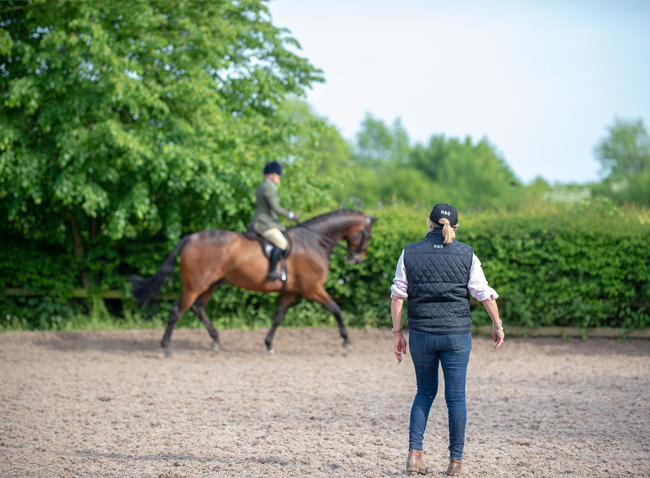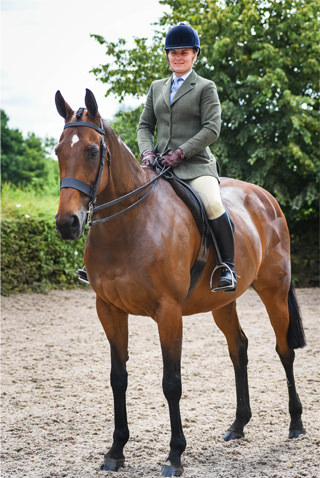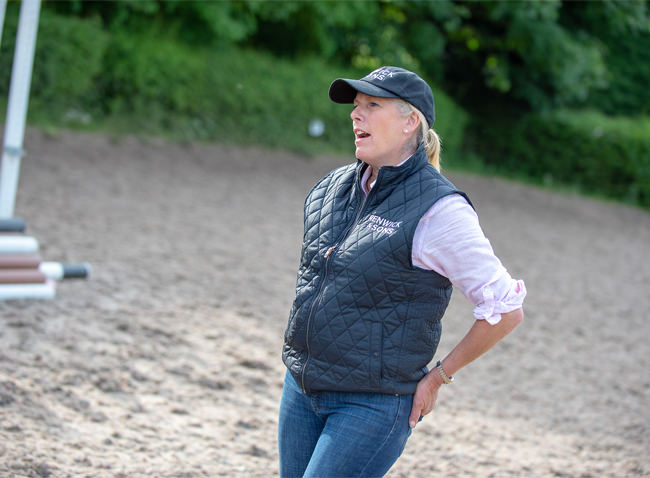You’ve put in the practice at home, and you’ve been polishing your horse, boots and tack till they shine and the big day has finally arrived – show day! We spoke to top professional show rider, producer and judge Katie Jerram-Hunnable, to find out what the judges are looking for in your performance.
First Impressions Count
As a judge, you are always looking for that horse and rider combination that presents a beautiful picture as soon as they walk into the ring. They are beautifully turned out and step into the ring with confidence and that ‘look at me’ factor. Make sure that you and your horse are dressed correctly for the class you are riding in. For example, coloured browbands are for riding horses, show ponies and hacks as opposed to working hunters, hunter ponies, Traditionals, Hunters, Natives and Cobs. Doing your research and abiding by the correct dress codes can go a long way in presenting your horse more professionally. I always look for a horse with a pleasant walk at this point. One that has a good step and a horse that looks happy and relaxed.
Trot On
I like horses to have a nice steady rhythm in the trot. A horse that covers the ground without rushing and one that pushes from the back-end with an active hock with a large shoulder movement. All my show horses are schooled at home like dressage horses. Exercises such as shoulder-in, leg yield, turn on the haunches and smooth transitions are something we practice on within our flatwork training at home. A show horse should be light in the hand, with all the power in the hind leg. You are looking for a horse that is forward thinking and one that you think ‘Oh that looks lovely, I’d like to sit on that’.

Clever In Canter
I like to see a horse that has a good balance in the canter with a nice ‘sat up’ even canter, working over his back into a soft light contact. I love the horse to be smooth in his transitions (so not crashing down into a horrid fast trot when we ask the riders to change the rein to canter on the other rein) You want to have a nice bounce into the last few canter strides into a balanced rhythmical trot before the canter again. Using lots of half halts before you prepare for trot will help you with a good transition into trot, and still, I like to see the horse willingly pop into the canter again in the same nice frame.
Gallop On
In Hunter classes, you will be asked to gallop on, and while the gallop might be a faster pace, it’s about getting it right, which is an art and takes practice. You want the horse to lower himself to the ground and really stretch and extend. I don’t like to see a rider using excessive rein contact to hold back a keen horse or a rider having to kick the horse on. Also ‘over firing’ the horse up in the corner. I want to see the horse come up slowly into the gallop so that when you are in the middle of the long side you are in full gallop and then bringing the horse slowly into canter, a balanced trot and then walk. The concept of the gallop is that if you were out hunting, you would want the horse to gallop on with a light aid and come back to you easily again. I want to see a horse listening to his rider’s aids, and from the ground, these rider aids should be invisible to the eye.
The Walk Does Talk
Once the final pair has finished the gallop, you generally walk around the arena while the judge or judges make their decision to pull you in for judges riding/individual show, stripping of tack for conformation judging (depending on the level you are competing at). At this point we are still judging you so don’t slump in the saddle like a sack of potatoes, sit up and don’t let his walk reduce to a lazy shuffle, keep the walk, uphill and active. A long rein should not mean you reduce the quality of the step.
Looks Count
Of course, confirmation is key, and for this feature, we have used Lordie or Ballycreen His Lordship, a beautiful example of a middleweight hunter. As you can see from Lordie, he has a good amount of bone and his body fits into a ‘box’: Not too long or short and the saddle sits in the right place in his back. He has a good chest and beautiful muscled and well-set neck, complemented further by tidy and even plaits. He has well-muscled hindquarters, and the shine on him is courtesy of correct feeding and daily grooming to help promote that beautiful bloom in his coat. His bridle is fitted correctly and complements his face – just the right thickness of browband and noseband.

Photo perfect turnout Image courtesy of Shapleys. Katie Louise Photography
Jo, who is riding in this feature is wearing correct attire for a hunter class: Hat with harness, tweed jacket, smart shirt and tie with a lovely discreet colour. Her breeches are a lovely shade of taupe and clean, shiny boots complete with a dummy spur or normal spurs (but not too long). It’s important to check the rules for the society you are competing in to ensure you are dressed correctly. Traditionally boots have a garter strap, this would be preferable, but you would not be marked down for wearing boots without these. Jo would also wear leather gloves of a brown or canary colour to complete her look with a show cane.
Loved reading this journal?
Then join up to our Newsletter for more fabulous tips and advice that you won’t find elsewhere
Photography by Jon Stroud Media.
Turnout image by Katie Louise Photography, courtesy of Shapley’s.
Back to Journal